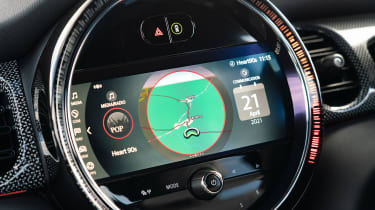Mini Cooper S review – mpg and running costs
The Cooper S isn't a big drinker, and is able to match its on-paper mpg in the real world
Mini’s application of BMW’s efficient modular engines payed dividends at the pumps, and that’s certainly the case for the F56 Cooper S. On paper, a 47-48mpg combined figure is very impressive against rivals, with the Hyundai i20 N and Toyota GR Yaris often struggling to reach the mid-30mpg range.
That’s despite the car using a 2-litre engine rather than the 1.5 or 1.6 standard to the class, but it’s a good example of what Mazda would call ‘rightsizing’ – the 2-litre four-cylinder doesn’t have to work very hard to get the Mini body moving, and if you’re not using all the revs, all the time, this results in good real-world economy.
In our experience, the Mini’s mid-40s economy means a real-world range between fills of around 400 miles, so visits to the pumps are relatively rare. A CO2 figure of 139g/km was portly, though.
Tyres shouldn’t be a great expense, given that the Cooper S is relatively lightweight and doesn't put oodles of power through its front wheels. Unless you plan on frequent track days, the brakes should last for the same reasons, too.




